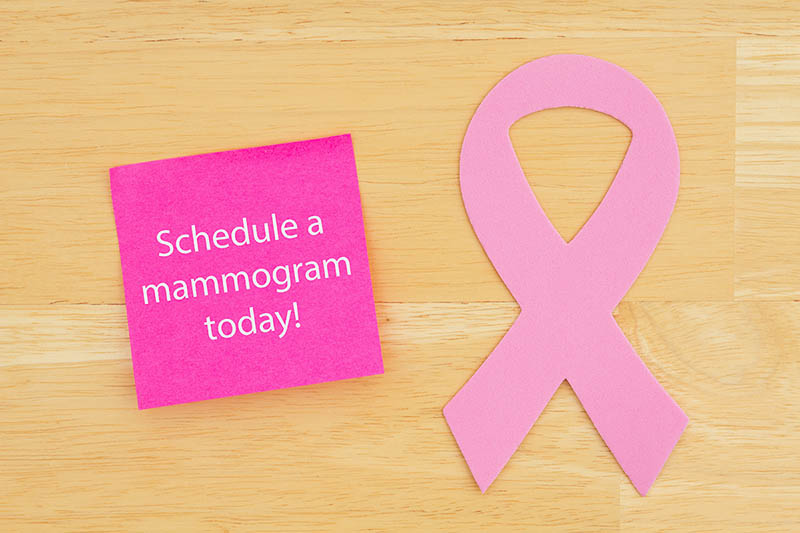Getting an Annual Mammogram Could Save Your Life
The American College of Obstetricians and Gynecologists recommends that women age 40 and older get a mammogram every year.

Despite what you may have heard, all women are at risk for breast cancer. In more than eight out of ten cases of breast cancer, there is no family history. Breast cancer is a serious disease that cannot be ignored. In the United States alone, a woman is diagnosed with breast cancer every two minutes.
"With breast cancer, it's common to experience no symptoms at all. That’s why in addition to performing regular self-exams to check for lumps, women age 40 and older should also get a mammogram once a year."
"According to the American Cancer Society, an annual breast cancer screening can help uncover the signs of breast cancer you might miss during a personal exam. In some cases, it's often years before a woman feels a lump or experiences other symptoms."
Decades of research show that women who get screened regularly for breast cancer are:
- More likely to detect breast cancer early
- More likely to avoid extensive surgery and chemotherapy
- More likely to be cured
Related: Do You Know the Warning Signs of Breast Cancer?
What is a mammogram?
A mammogram is a screening tool used to identify signs of breast cancer. Because lumps may be too small to feel, a mammogram is able to snap a picture of the tissue using an x-ray that your healthcare provider can then analyze to determine, for example, if the lump is cancerous or a cyst.
What if I am pregnant or breastfeeding?
If you’re pregnant or breastfeeding, a mammogram should not be done. If your healthcare provider determines it is necessary, safety measures will be taken such as covering your belly with an apron lined with lead that blocks radiation. Talking with your healthcare provider will help you understand additional screening options that may be better options.
What if I’ve had a breast augmentation?
Women who have had a breast augmentation and implants should talk with their healthcare provider before having a mammogram. Additionally, a mammogram may not be the best screening option if you have implants as a result of a breast augmentation or mastectomy. Instead, your healthcare provider may recommend a breast MRI, ultrasound, or both.
Most Select Health plans cover breast cancer screening under preventive care at 100%. This means you don’t pay a copay, coinsurance, or a deductible to have your yearly screening mammogram. If a preventive service identifies something requiring additional testing or treatment, regular cost-sharing may apply.
References:
Susan G. Komen website. “Breast Cancer Statistics.” Web. May 2017.
http://ww5.komen.org/BreastCancer/Statistics.html
American College of Obstetricians and Gynecologists. “ACOG statement on revised American Cancer Society recommendations on breast cancer screening.” Web. June 2017.
https://www.acog.org/About-ACOG/News-Room/Statements/2015/ACOG-Statement-on-Recommendations-on-Breast-Cancer-Screening
American Cancer Society website. “American Cancer Society recommendations for the early detection of breast cancer.” Web. June 2017.
https://www.cancer.org/cancer/breast-cancer/screening-tests-and-early-detection/american-cancer-society-recommendations-for-the-early-detection-of-breast-cancer.html

